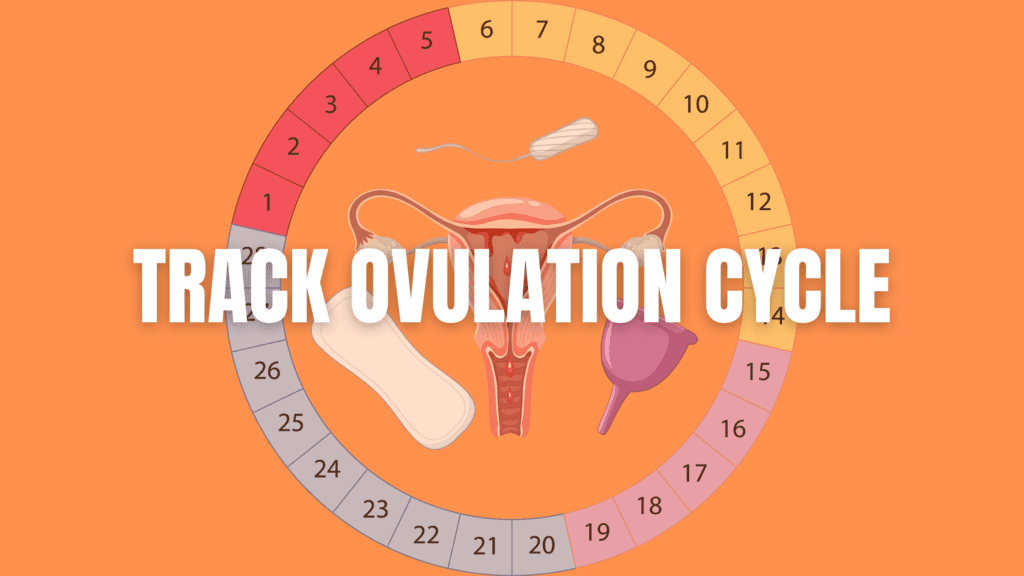Your body is a masterpiece, always working in beautiful, rhythmic cycles, even when you don’t notice. Understanding your ovulation cycle is a powerful way to connect with yourself, whether you’re trying to conceive, prevent pregnancy, or simply become more in tune with your body. No matter your reason, tracking your ovulation is about self-awareness, empowerment, and taking control of your reproductive health. And guess what? It’s easier than you think! Read more to learn about how do i track my ovulation cycle.
Why Should You Track Ovulation?
Your body sends signals every month, guiding you through different phases of your cycle. Understanding these signs can:
✔️ Help you conceive naturally by identifying your most fertile days
✔️ Assist in natural contraception if you’re avoiding pregnancy
✔️ Reveal potential hormonal imbalances or health concerns
✔️ Help you predict and manage PMS symptoms
✔️ Allow you to embrace your body’s natural rhythm
No matter your goal, this knowledge gives you the power to make informed decisions.
1. Track Your Menstrual Cycle
Your cycle is unique to you. The first step is simple, mark the first day of your period every month.
✨ A typical cycle is 28 days, but it can vary between 21 to 35 days.
✨ Ovulation generally happens 14 days before your next period starts.
✨ Your most fertile days are 2-3 days before ovulation and the day of ovulation itself.
Use a calendar, journal, or period-tracking app to record your cycle and look for patterns over time.
2. Listen to Your Body’s Signs of Ovulation
Your body is always whispering its secrets, learning to listen is the key! Here are some natural signs of ovulation:
🔹 Changes in Cervical Mucus: Your discharge becomes clear, stretchy, and slippery (like egg whites) when you’re most fertile.
🔹 Basal Body Temperature (BBT): Your temperature slightly rises after ovulation. Track it with a thermometer every morning before getting out of bed.
🔹 Mild Pelvic Pain: Some women feel a small cramp or twinge (called mittelschmerz) when ovulation occurs.
🔹 Increased Libido: Your body naturally enhances your desire for intimacy during ovulation.
🔹 Breast Tenderness: Hormonal changes may cause slight swelling or sensitivity.
🔹 Cervical Position Changes: Your cervix becomes softer, higher, and more open around ovulation.
Every woman is different, your body may show one or multiple signs! The more you track, the better you’ll understand your own cycle.
3. Use Ovulation Prediction Methods
If you want extra accuracy, science has your back! Here are some tools that can help:
🔸 Ovulation Predictor Kits (OPKs): These home tests detect the luteinizing hormone (LH) surge in your urine, which happens right before ovulation. A positive result means ovulation is likely within 12-36 hours.
🔸 Fertility Monitors: These advanced devices track multiple hormones to pinpoint your fertile days.
🔸 Tracking Apps: Apps like Flo, Clue, and Glow analyze your cycle data to predict ovulation.
Using these methods along with natural body signals makes tracking even more reliable.
4. Be Patient & Trust the Process
Your body is unique, and cycles may vary from month to month. That’s okay! Give yourself time to observe and learn. If your cycle is irregular, it might take longer to recognize patterns, but that doesn’t mean it’s impossible.
If you ever feel unsure or notice extreme irregularities, consult a doctor. Hormonal imbalances, stress, or underlying health conditions can affect ovulation, and professional guidance can help.
Final Thoughts: You Got This!
Tracking your ovulation is more than just planning, it’s about understanding, embracing, and honoring your body. It’s about trusting yourself and making choices that align with your life and goals.
Every cycle is a fresh start, a new opportunity to listen, learn, and care for yourself. Whether you’re hoping to conceive, trying to regulate your cycle, or simply curious, know that you are in control, your body is beautifully designed and now you know how do i track my ovulation cycle.
You’ve got this! 💖

